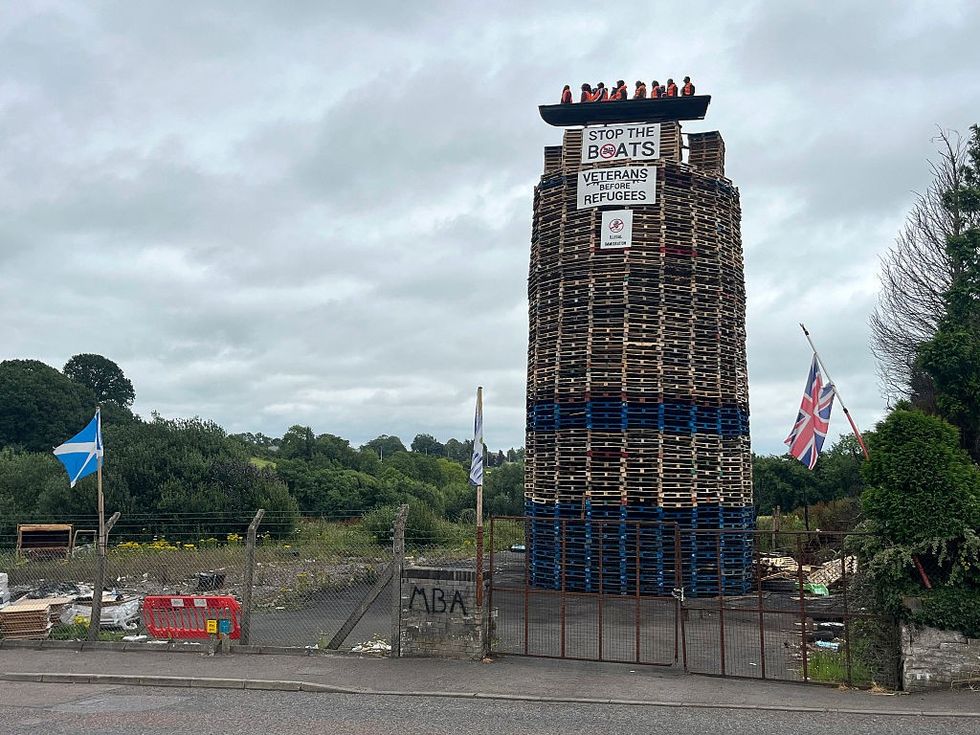Over the last few weeks, the UK has experienced temperatures up to 35C, followed by warnings for yellow thunderstorms – though Britons are used to unpredictable weather, and everyone is aware that it’s safer indoors when it’s storming outside, did you know that you need to take precautions to stay safe inside your home as well?
The Sun informs that scientists have warned that you should steer clear of any plumbing and water-based activities, thus, washing the dishes when it’s thundering to reduce your risk of being struck by lightning.
So, doing the dishes, taking a shower, or even just washing your hands can prove to be dangerous, states an earlier report in Reader’s Digest.
Dr James Rawlings, Physics lecturer at Nottingham Trent University is reported to have said, that this is because of the way a thunderstorm is activated.
He explains that there are two basic elements that help a storm thrive - moisture and rising air.
Writing in The Conversation, he is quoted as saying, "The high temperatures and humidity create large amounts of moist air that rises into the atmosphere, where it can form into a thunderstorm.
"Clouds contain millions of water and ice droplets and the interaction of these is what leads to lightning generation.
"The rising water drops collide with the falling ice drops, passing them a negative charge and leaving themselves with a positive charge."
John Jensenius, lightning safety specialist for the National Weather Service is an earlier report posted in AccuWeather, reportedly stated, “Stay away from things that conduct electricity within the home.
“That would include both the wires and the plumbing.” Any time you hear thunder, keep the water off, he advises.
In case you’re wondering if plastic pipes make it safe to use your home’s plumbing during a storm, it would be wise to remember that, “Water can conduct electricity as well,” he says.
John cautions against using appliances as well. He is reported to have said, “Anything plugged into the wall or that also has connections to your home’s plumbing—like your dishwasher—can potentially be dangerous.”
This includes using (or even touching) any corded appliance, such as your toaster, stand mixer, or blender. The use of televisions, landlines, and computers, too, can be unsafe during a storm.
To stay protected, it’s best to wait until the storm as passed – this is because lightning can strike at a distance of up to ten miles away. So, if you can hear thunder, it would be best to take precautions.
Inside your home too, you need to be cautious. Dr Rawlings reportedly told The Sun, "If lightning strikes your house, the electricity would follow the path of least resistance to the ground.
"Things such as metal wires or water in your pipes provide a convenient conductive path for the electricity to follow to the ground.
"The shower provides both of those things (water and metal), making it an ideal path for the electricity to take.”
Dr Rawlings further explains that as well as staying away from water, you should also avoid leaning on concrete walls - as some concrete can be reinforced with metal beams which can in turn conduct lightning.
"As a rule of thumb, if you can hear thunder in the distance, then you're close enough to the storm to have lightning reach you, even if there is no rain," he warns.
The Met Office has reportedly stated that more 'unsettled weather' is on the way next month, and this is urging experts to warn that you should be wary of housework during certain conditions, The Sun said.
















 Kap’s Cafe in Surrey was struck by gunfire late at night with staff still insideInstagram/
Kap’s Cafe in Surrey was struck by gunfire late at night with staff still insideInstagram/ Kaps Cafe Instagram Story Instagram Screengrab/
Kaps Cafe Instagram Story Instagram Screengrab/ Kaps Cafe Instagram Story Instagram Screengrab/
Kaps Cafe Instagram Story Instagram Screengrab/


